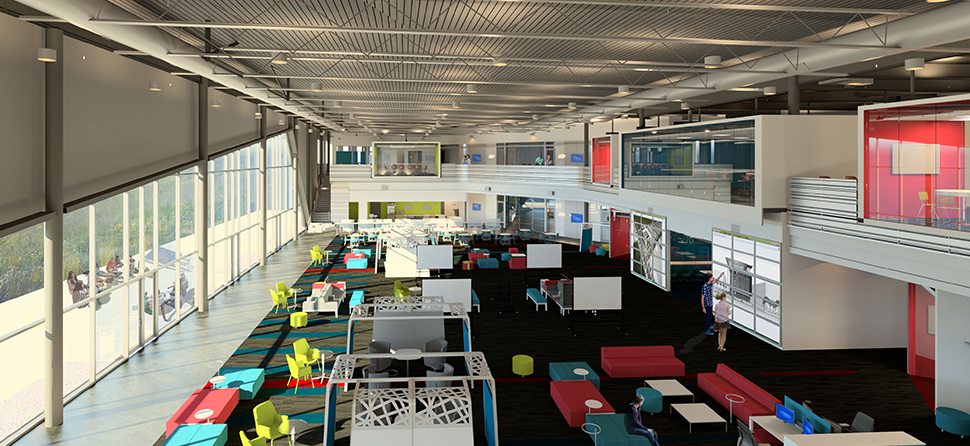To understand the future of education, we need to understand where we are and where we’ve been.

As architects, we work with many groups across the education spectrum to engage in broad discussions about what education will and should look like. To look forward, it’s important to take a step back and consider the evolution of education. How and why has it evolved and what drivers will continue to influence change?
Education is not new; it is the basis of our development as a species. Historically, as civilizations have become more complex they develop the need to transmit increasing amounts of knowledge not only from person to person but also from generation to generation. The drastic change in how we transmit knowledge has created a drastic change in how far it reaches.
Since the invention of writing (around 3200 BC) and until the Industrial Revolution (19th Century), formal education has been available to only a tiny fraction of the population. The other vast majority learned by doing, in a variety of formal and informal apprenticeships. In our country it has been only six or seven generations since Horace Mann led the Common School Movement and managed to successfully create a tax to support what we now identify as public schools. Put in context, it is easy to see how formal teaching and learning, as we know it, has had a relatively short history and evolution.
Early Education Models
1. Apprenticeship Model
Education happened long before it was formalized. You simply learned, hands-on, from a practicing expert. Before there was a school for children to attend, learning was by apprenticeship at all stages of life. Young children learned primarily from their parents at home. Young adults either continued the skills taught during their youth, or moved on to another role model to learn additional skills at any point in their adult lives. This model was great for learning specific skills, but lacked diversity, well-rounded learning and innovation.
2. One-Room School House Model
In 19th century America the one room school house was the norm in rural parts of the United States with over 200,000 popping up nationally. These were multi-age classrooms with unique and personal instruction to suit age and ability. Instruction was generally focused on memorization and reciting of lessons on reading, writing, arithmetic and geography. This model was great for individual learning at a personalized pace.
3. Factory Model
This next model was developed in response to the challenge of broadly educating the dramatically expanding American population and the growing need for formal education. The factory model focused on imparting the largest amount of information to the greatest number of children in the shortest possible time. This was often a single teacher as the source of knowledge distributing the same instruction to many different kinds of students in chairs, literally bolted to the floor, facing the front of the room in tight rows. This model was necessarily efficient and non-nuanced in comparison to the school house model. It is still in use to some degree today, but won’t be for long. It was great for educating the masses, but watered down personalized learning.
Harvard education innovation fellow Tony Wagner sums these notions up best by saying, “Today knowledge is ubiquitous, constantly changing, growing exponentially… Today knowledge is free. It’s like air, it’s like water. It’s become a commodity… There’s no competitive advantage today in knowing more than the person next to you. The world doesn’t care what you know. What the world cares about is what you can do with what you know.”
The 21st Century Model
This model of education is not one single method, but rather an approach that combines the best features of the three early models of education:
- Hands-on learning
- Individualized learning programs
- Adaptability and flexibility to the pace of change
Many new theories, methods, styles and techniques have emerged and early adapters can be found all over the map. High Tech High, Manor New Tech High School, Blue Valley CAPS and, now, Waukee’s APEX program are a few examples of how schools are incorporating a new 21st Century model.
Whether this model is based on profession-based learning, project-based learning, trend-forward, inquiry-based learning, service learning, or some other pedagogy, one thing is clear — education is transforming from the traditional, classroom-style model to more innovative, student-centered learning that provides practical, hands-on experiences.